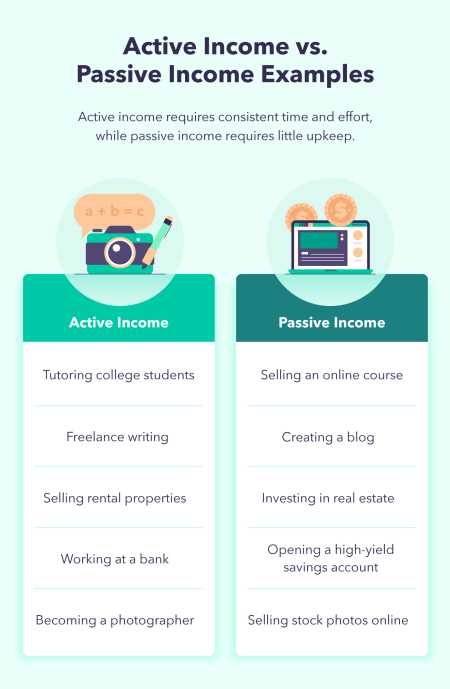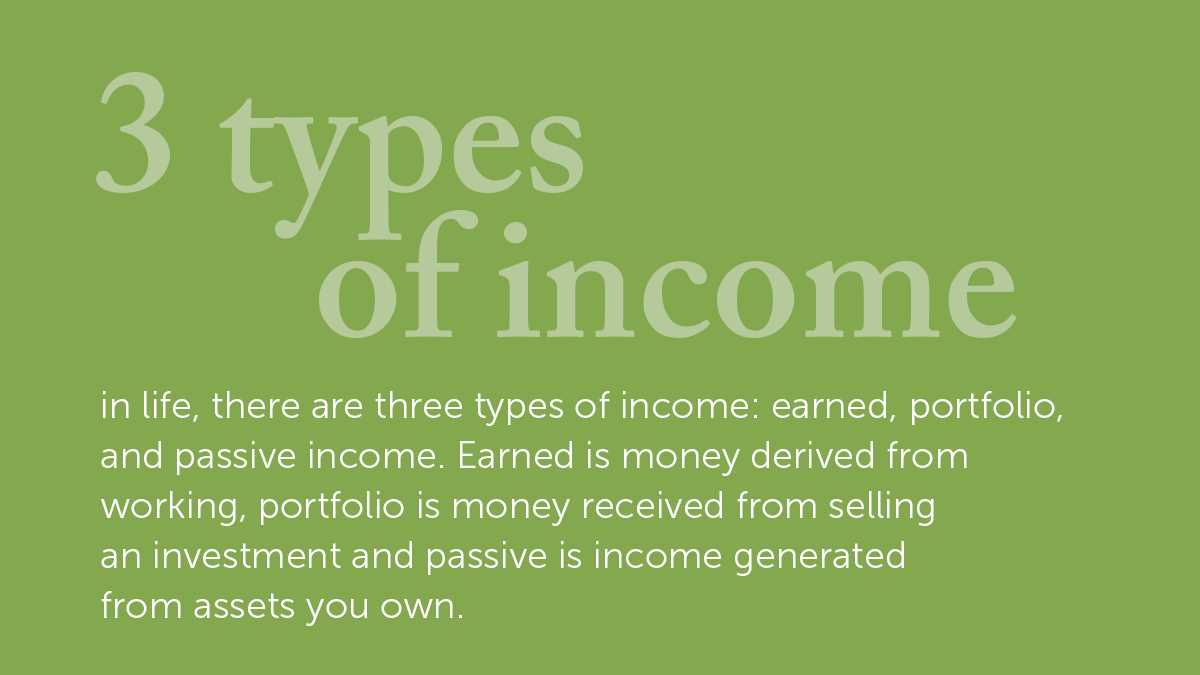What is Passive Income?

Passive income refers to the earnings that are generated with little to no effort on the part of the recipient. Unlike active income, which requires continuous work and time investment, passive income allows individuals to earn money while they sleep or engage in other activities.
Passive income can be derived from various sources, such as investments, real estate, intellectual property, and business ownership. It provides individuals with the opportunity to build wealth and achieve financial independence by creating a steady stream of income that is not dependent on their active participation.
Passive income can take various forms, including rental income from real estate properties, dividends from stocks and mutual funds, royalties from books or music, affiliate marketing, and online businesses. It is important to note that passive income does not mean “get rich quick” or “no work involved.” It often requires upfront investment, research, and ongoing maintenance to ensure the income stream remains profitable.
Passive income refers to the money earned regularly with little to no effort on the part of the recipient. Unlike active income, which requires active participation in a job or business, passive income is generated from assets or investments that continue to generate income even when the individual is not actively involved.
There are several benefits to earning passive income:
1. Financial Freedom:

Passive income provides individuals with the opportunity to achieve financial freedom. By generating income that is not dependent on their time and effort, they can have more control over their financial situation and have the freedom to pursue other interests or spend time with loved ones.
2. Diversification of Income:
Earning passive income allows individuals to diversify their sources of income. Relying solely on active income from a job or business can be risky, as it is dependent on a single source. By creating multiple streams of passive income, individuals can reduce their financial risk and have a more stable income.
3. Potential for Growth:
4. Flexibility and Freedom:
Earning passive income provides individuals with flexibility and freedom in terms of how they spend their time. Since passive income does not require active participation, individuals can choose how much time and effort they want to dedicate to their passive income streams. This allows for a better work-life balance and the ability to pursue other passions or interests.
Categories of Passive Income
Passive income can be categorized into various types, depending on the source and nature of the income. Here are some common categories of passive income:
- Investment Income: This category includes income generated from investments such as stocks, bonds, mutual funds, real estate, and other financial instruments. It can be in the form of dividends, interest, or capital gains.
- Rental Income: Rental income is earned by leasing out properties such as residential homes, apartments, commercial spaces, or even vehicles. This type of passive income requires initial investment in the property, but it can provide a steady stream of income over time.
- Business Income: Passive income can also be generated through a business that operates without active involvement from the owner. This can include businesses that are run by employees or automated systems, such as online stores, vending machines, or royalties from intellectual property.
- Royalties: Royalties are payments received by individuals or entities for the use of their intellectual property, such as patents, copyrights, trademarks, or even music and book royalties. This type of passive income can be earned repeatedly without much effort once the intellectual property is created.
- Interest Income: Interest income is earned from lending money to individuals or businesses and receiving interest payments in return. This can include investments in bonds, peer-to-peer lending platforms, or even savings accounts that offer interest.
- Online Income: With the rise of the internet, there are numerous opportunities to earn passive income online. This can include income from affiliate marketing, online courses, e-books, advertising revenue from websites or blogs, and even income from YouTube videos.
Exploring Different Sources of Passive Income
Passive income is a great way to generate additional revenue without having to put in constant effort or time. There are various sources of passive income that individuals can explore to diversify their income streams and achieve financial independence. Here are some popular sources of passive income:
1. Rental Properties
Investing in rental properties is a common way to generate passive income. By purchasing a property and renting it out to tenants, you can earn a steady stream of rental income. However, it is important to consider factors such as property management, maintenance costs, and market demand before investing in rental properties.
2. Dividend Stocks

Investing in dividend stocks allows individuals to earn passive income through regular dividend payments. Dividend stocks are shares of companies that distribute a portion of their profits to shareholders. By investing in dividend-paying stocks, investors can earn a passive income stream in the form of dividends.
3. Peer-to-Peer Lending
Peer-to-peer lending platforms provide an opportunity for individuals to lend money to others and earn interest on their investments. By acting as a lender, individuals can earn passive income through the interest payments made by borrowers. However, it is important to carefully assess the creditworthiness of borrowers before lending money.
4. Royalties
If you have creative talents such as writing, music, or art, you can earn passive income through royalties. By licensing your work to others, you can receive royalty payments whenever your work is used or sold. This can be a lucrative source of passive income, especially if you have popular and widely-used creations.
5. Affiliate Marketing
Affiliate marketing involves promoting products or services and earning a commission for every sale or lead generated through your referral. By partnering with companies as an affiliate marketer, you can earn passive income by promoting their products or services through your website, blog, or social media platforms.
6. Digital Products
Creating and selling digital products, such as e-books, online courses, or software, can be an excellent source of passive income. Once you have created and launched your digital product, you can continue to earn income from sales without the need for ongoing effort or time investment.
These are just a few examples of the many sources of passive income available. It is important to carefully evaluate each opportunity and consider factors such as risk, potential returns, and personal interests before deciding which sources of passive income to pursue. Diversifying your passive income streams can help create a stable and sustainable source of income for the long term.
Examples of Passive Income
Passive income refers to the money earned with little to no effort on the part of the recipient. It is a great way to generate additional income and achieve financial independence. Here are some examples of passive income:
1. Rental Properties
Investing in rental properties is a popular way to earn passive income. By purchasing a property and renting it out to tenants, you can generate a steady stream of rental income. This income can be passive if you hire a property management company to handle the day-to-day operations.
2. Dividend Stocks
Dividend stocks are shares of companies that distribute a portion of their profits to shareholders on a regular basis. By investing in dividend stocks, you can earn passive income in the form of regular dividend payments. This income can be reinvested or used for other purposes.
3. Peer-to-Peer Lending
Peer-to-peer lending platforms allow individuals to lend money to others in exchange for interest payments. By participating in peer-to-peer lending, you can earn passive income by collecting interest on the loans you make. However, it is important to carefully assess the risks involved before investing.
4. Royalties
If you have creative talents, such as writing, music, or art, you can earn passive income through royalties. Royalties are payments made to the creator of a work for the use or sale of that work. For example, authors receive royalties from book sales, musicians receive royalties from song downloads or streaming, and artists receive royalties from the sale of their artwork.
5. Affiliate Marketing
Affiliate marketing involves promoting other people’s products or services and earning a commission for each sale or lead generated through your referral. This can be done through a blog, website, or social media platforms. By building a strong online presence and attracting a large audience, you can earn passive income through affiliate marketing.
6. Digital Products
Creating and selling digital products, such as e-books, online courses, or software, can be a lucrative source of passive income. Once you have created the product, you can sell it repeatedly without much additional effort. This allows you to earn passive income from the sales of your digital products.
These are just a few examples of passive income streams. The key is to find a passive income strategy that aligns with your interests, skills, and financial goals. With the right approach and dedication, passive income can provide financial stability and freedom.
Real-life Examples of Passive Income Streams
Passive income streams can provide individuals with a steady source of income without requiring constant effort or active involvement. Here are some real-life examples of passive income streams:
1. Rental Properties: Investing in rental properties can be a lucrative way to generate passive income. By purchasing properties and renting them out to tenants, you can earn rental income on a regular basis. This income can cover the expenses of the property and provide you with a profit.
3. Peer-to-Peer Lending: Peer-to-peer lending platforms allow individuals to lend money to others in exchange for interest payments. By participating in peer-to-peer lending, you can earn passive income by lending money to borrowers and receiving interest payments over time.
4. Royalties: If you have creative works such as books, music, or artwork, you can earn passive income through royalties. Royalties are payments made to the creator of a work for the use or sale of that work. By licensing your creative works, you can receive ongoing royalty payments without actively creating new content.
5. Affiliate Marketing: Affiliate marketing involves promoting products or services and earning a commission for each sale or referral made through your unique affiliate link. By building an audience and recommending products or services that align with their interests, you can earn passive income through affiliate marketing.
6. Digital Products: Creating and selling digital products such as e-books, online courses, or software can generate passive income. Once you have created the product, you can sell it repeatedly without the need for ongoing production or fulfillment.
7. Real Estate Investment Trusts (REITs): REITs are companies that own, operate, or finance income-generating real estate. By investing in REITs, you can earn passive income through dividends paid by the company. This allows you to participate in the real estate market without the need for direct property ownership.
These are just a few examples of passive income streams that can provide individuals with financial freedom and flexibility. By diversifying your passive income sources, you can create a stable and sustainable income stream that requires minimal effort and allows you to focus on other aspects of your life.

Emily Bibb simplifies finance through bestselling books and articles, bridging complex concepts for everyday understanding. Engaging audiences via social media, she shares insights for financial success. Active in seminars and philanthropy, Bibb aims to create a more financially informed society, driven by her passion for empowering others.
